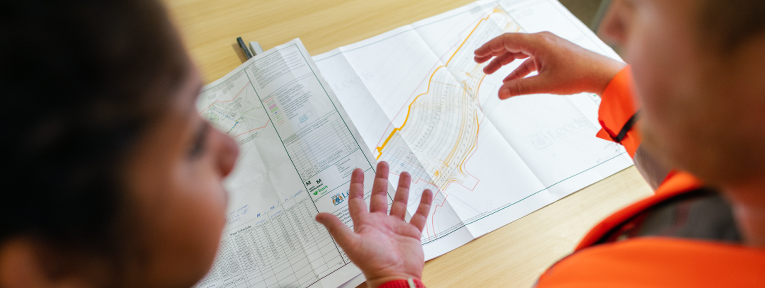
Building Collective Intelligence tool
Purpose: Tap into your team’s potential to solve complex problems
Time required: Initial half-day workshop, then interim follow-up work over the next six months
The theory behind the resource: The traditional approach to problem-solving on large projects is to rely on the knowledge and experience of individual experts. However, we are coming to realise that when faced with the often complex and ambiguous issues that are a feature of 21st-century, projects require a different way of thinking. The solution is to tap into the power of human ingenuity by using the collective thinking power of a diverse group. Teams can therefore provide an invaluable mechanism for finding new and effective solutions to difficult problems.
Accessing the collective intelligence of a team is, however, easier said than done. Assembling a group of bright minds does not mean they will generate any new thinking. There are a number of barriers which inhibit the truly open discussions that are needed. Miscommunication, a lack of appreciation of each other’s mental filters, outsized egos, and internal rivalries all diminish thinking capacity. To build collective intelligence, teams often need to learn, through training and group coaching, to be able to understand their limiting factors and how to work around them.
The process: The first step is to set up a half-day workshop, or to include the following activities as part of a team development day. The workshop comprises of three sessions.
Part One – Seeing different perspectives
The first part of the journey is to help team members recognise they have different ways of thinking. One of the fastest ways to do this is to use a simple psychometric that will help identify different motivations or preferences that will shape each person’s perspectives. Our preference is SDI (Strength Deployment Inventory) because it is quick to administer, easy to absorb, and most importantly easy to memorise. Having sent out the online tests the week before the team should arrive at the workshop aware of their own psychometric profile. The facilitator can then focus the team on the differences that are likely to emerge from each of the main profiles. The purpose of this first session is to engage the team members in a discussion that begins to help them see the potential value in having different perspectives when compared with the limitations that come with a single point of view.
Part Two – Formative experiences
How we behave in a working environment is also influenced by our previous experiences, both positive and negative. The second part of the workshop requires the team to split into groups of two or three people. Each person is then allowed five minutes to talk about what they remember as an important experience that has shaped how they think or make decisions. This could be personal or it could be professional. Once each person has had the chance to share, their counterpart must then provide a shortened (two minutes) summary of what they have heard, to the rest of the room. The value of this exercise is that it begins to deepen the types of conversation that can take place between team members helping them to understand what matters to each person and why.
Part Three – Understanding the need for psychological safety
A team is unlikely to harness its collective intelligence if some of the members do not feel psychologically safe. In other words, every person around the table feels sufficiently comfortable to be able to express their thoughts without fear of ridicule or retribution. This is easy to understand in theory, but how does it work in practice?
This is a short exercise where the concept of psychological safety is explained. Having allowed some time for questions, each team member is asked to spend five minutes thinking about the concept and to make a note of their thoughts around the following questions:
- When do I feel most safe in a meeting?
- When might I be uncomfortable?
- What could we do as a team to improve our sense of safety?
- How do we get better at challenging each other’s thinking without creating an intimidating atmosphere?
The facilitator then goes around the table, taking each of the questions, in turn, explains their thoughts without interruption, summarising their points on a flip chart. Once each person has spoken the team can then have a short discussion before moving on to the next point.
Part Four – Next actions
To close off the session, the team should spend 10 minutes identifying a series of actions they will take forward in future meetings.
Notes:
These exercises will not in themselves automatically improve the team’s Collective Intelligence. They will however your team the foundation upon which to build a more effective way of thinking as a genuine team. The key point to emphasise is that in a complex environment, there are few simple answers. Indeed one of the dangers teams face is to try and oversimplify an issue by simply ignoring the other elements that create complexity.
Part of the underlying learning from the above exercises should be that no single member of the team has the full answer, but each member of a team potentially has a part of it. Teams who can learn the humility to accept this have a much better chance of finding novel and practical responses to the challenges of 21st-century problems.